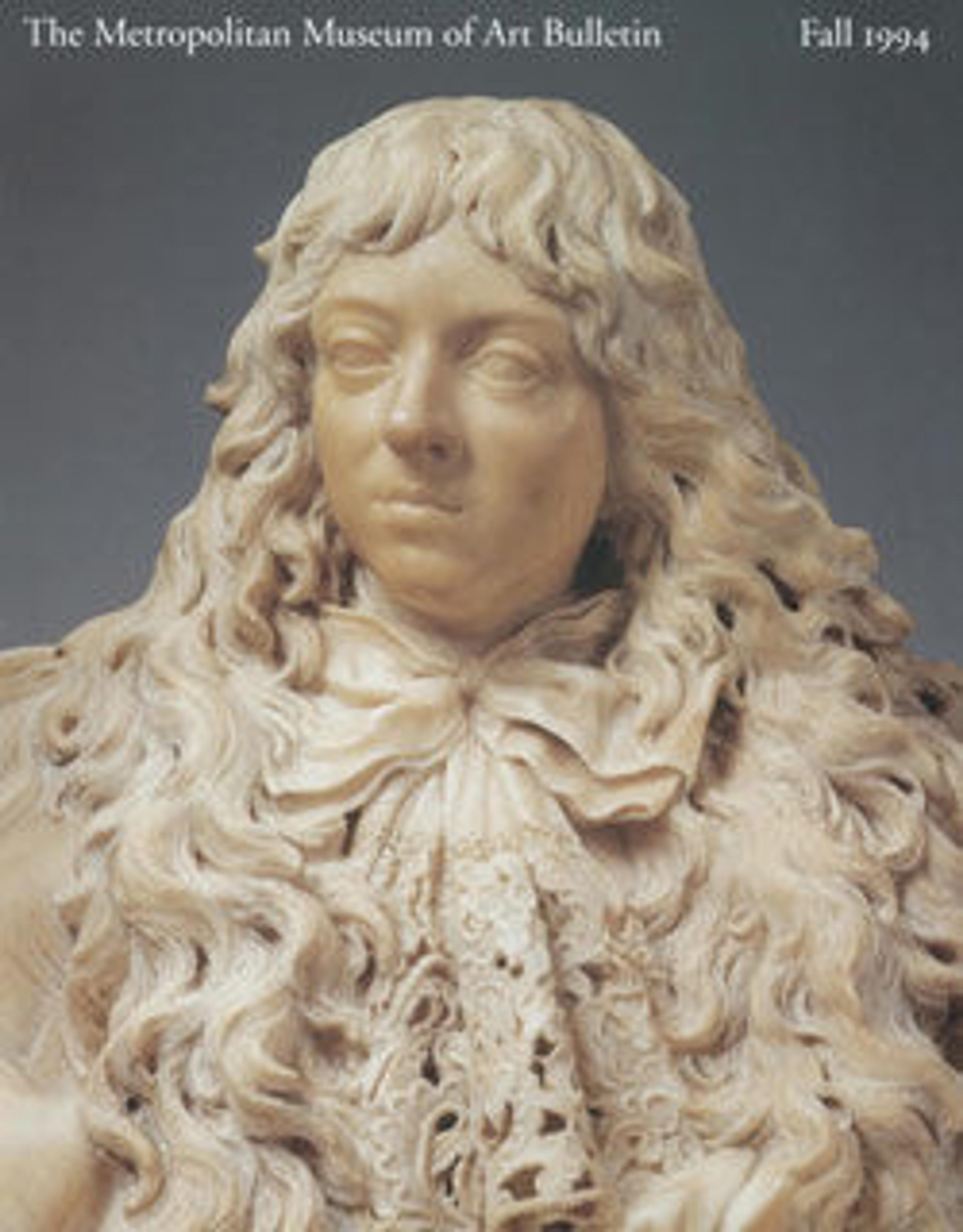Udàmalóre (ceremonial sword) and sheath with apete (panel ornaments)
The leadership arts of Owo, an ancient Yoruba town, reflect those of Benin, the Edo kingdom that dominated Owo in the sixteenth and eighteenth centuries. This ceremonial sword and sheath (udamalore) and the matching lozenge-shaped panels (apete) recall the chiefly regalia illustrated on Benin brass plaques of the sixteenth and seventeenth centuries. The udamalore is worn by Owo chiefs on the left hip above the panels, which are hung over a belt. A voluminous wrapped skirt, tall miter-shaped hat, brass and ivory pendants and armlets, and a fan-shaped iron sword (also of Benin origin) held in the right hand complete the ceremonial attire.
The udamalore sword is made of wood, and both its sheath and the panels are lavishly embroidered with brilliantly colored glass beads. Imported from Europe, the beads are a sign of wealth and status among the Yoruba. Although the beaded figures and animals are arranged symmetrically, their jagged outlines and vivid colors create a dizzying, dancing composition. The motifs--human figures, ram's heads, crouching monkeys, birds, chameleons, and other animals--refer to the protective role of the ancestors, the chief's inalienable powers and privileges, and the mystical forces that protect and strengthen the wearer of such lavish costume ornaments.
This Ceremonial sword and sheath (Udamalore) is completed by the panel ornaments 1993.500.1.
The udamalore sword is made of wood, and both its sheath and the panels are lavishly embroidered with brilliantly colored glass beads. Imported from Europe, the beads are a sign of wealth and status among the Yoruba. Although the beaded figures and animals are arranged symmetrically, their jagged outlines and vivid colors create a dizzying, dancing composition. The motifs--human figures, ram's heads, crouching monkeys, birds, chameleons, and other animals--refer to the protective role of the ancestors, the chief's inalienable powers and privileges, and the mystical forces that protect and strengthen the wearer of such lavish costume ornaments.
This Ceremonial sword and sheath (Udamalore) is completed by the panel ornaments 1993.500.1.
Artwork Details
- Title:Udàmalóre (ceremonial sword) and sheath with apete (panel ornaments)
- Artist:Yoruba artist
- Date:19th–first half of 20th century
- Geography:Nigeria, Owo
- Culture:Yoruba
- Medium:Cotton, glass beads, wood, brass, rope
- Dimensions:H. 27 3/4 × W. 19 7/8 × D. 3 3/4 in. (70.5 × 50.5 × 9.5 cm)
- Classification:Textiles-Beadwork
- Credit Line:Gift of Dr. and Mrs. Jeffrey S. Hammer, in memory of William B. Fagg, 1993
- Object Number:1993.500.2a, b
- Curatorial Department: The Michael C. Rockefeller Wing
More Artwork
Research Resources
The Met provides unparalleled resources for research and welcomes an international community of students and scholars. The Met's Open Access API is where creators and researchers can connect to the The Met collection. Open Access data and public domain images are available for unrestricted commercial and noncommercial use without permission or fee.
To request images under copyright and other restrictions, please use this Image Request form.
Feedback
We continue to research and examine historical and cultural context for objects in The Met collection. If you have comments or questions about this object record, please contact us using the form below. The Museum looks forward to receiving your comments.
